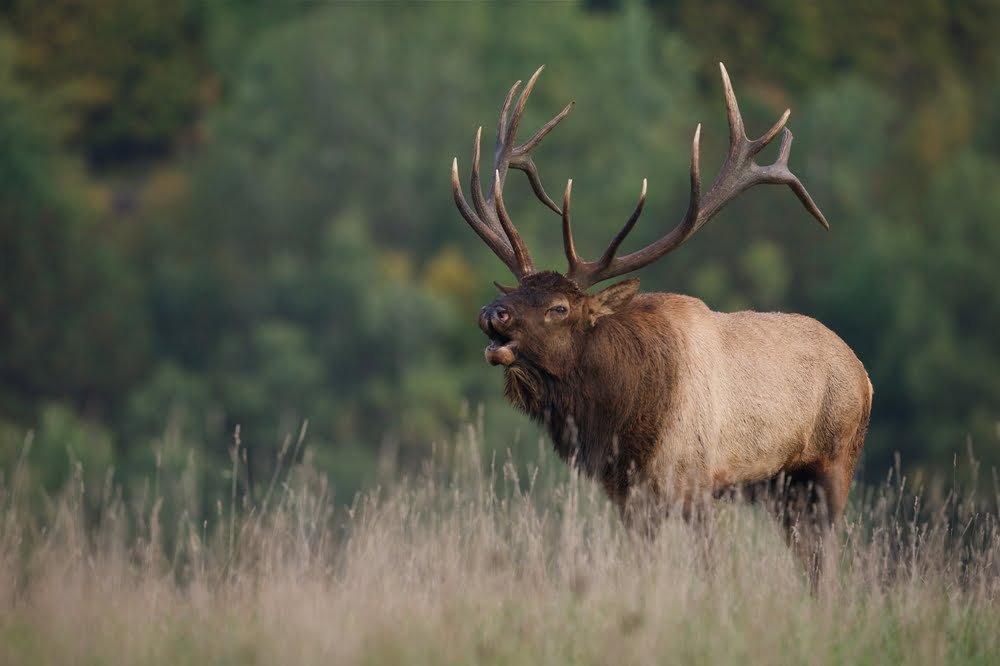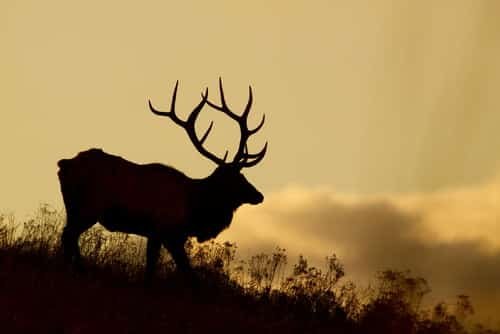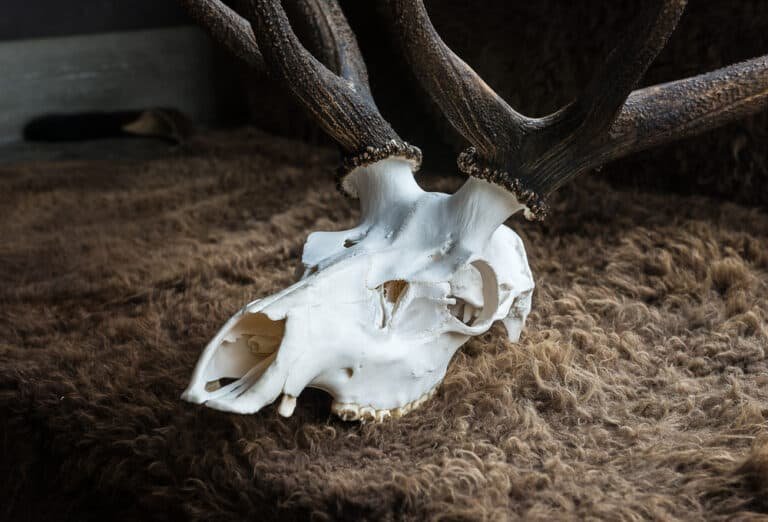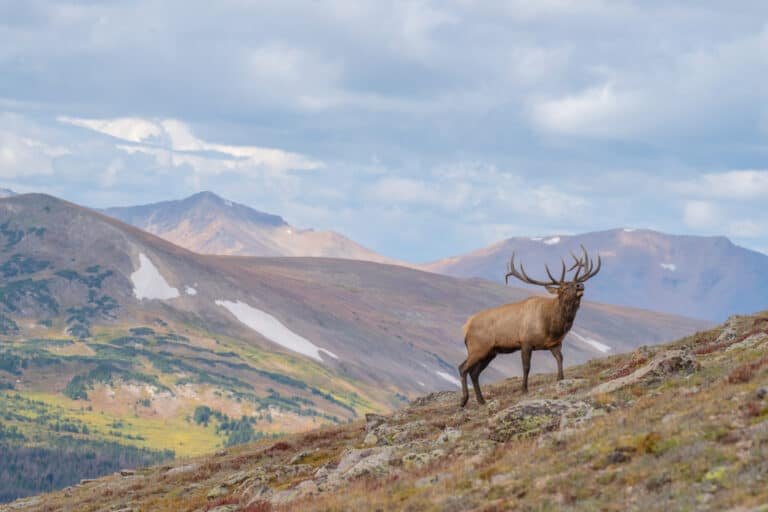Successful Elk Hunting in Pennsylvania – What You Must Know
With its majestic landscapes and abundant wildlife, Pennsylvania has a thriving elk population. The state’s elk herd is primarily found in the north-central region, specifically in Elk County. These hunters are always reading for Pennsylvania Elk Hunting. Are you?
Hunting these magnificent creatures is an exhilarating outdoor activity and a regulated endeavor ensuring sustainable population management. The Pennsylvania Game Commission carefully monitors the elk population through surveys and data analysis. Hunting regulations are implemented to maintain a balanced ecosystem, including specific seasons, permits, and bag limits.
Preserving the ecosystem and managing the elk herd
Elk hunting is vital in preserving the delicate balance within Pennsylvania’s ecosystem. By actively managing the elk herd size through regulated hunting seasons, wildlife experts prevent overpopulation that can lead to habitat destruction and competition for resources among animals. Moreover, controlled hunting helps maintain healthier herds by selectively removing older or weaker individuals, allowing younger ones with stronger genetics to thrive.
This benefits the herd’s overall health and maintains genetic diversity among the population. Therefore, elk hunting is crucial for conserving Pennsylvania’s natural heritage while ensuring long-term wildlife and habitat sustainability.
Pennsylvania Elk Hunting allows enthusiasts to immerse themselves in nature while contributing to responsible conservation efforts. Understanding the importance of this activity sets the foundation for appreciating its ecological significance and recreational value.
History of Elk in Pennsylvania
Early Extinction and Reintroduction Efforts
Pennsylvania’s history with elk is nothing short of fascinating. In the 19th century, due to unregulated hunting, habitat loss, and market hunting for their meat and antlers, the once-thriving elk population in Pennsylvania was driven to extinction.
By the late 1800s, these majestic creatures had disappeared entirely from the state. However, recognizing the ecological importance and cultural significance of elk, ambitious efforts were made to reintroduce them.
Successful Restoration Programs and Population Growth
Pennsylvania’s elk restoration programs have been remarkably successful thanks to the relentless dedication of conservationists and wildlife agencies. The first attempt at reintroduction occurred in 1913 when a small group of Rocky Mountain elk from Yellowstone National Park were released into parts of north-central Pennsylvania.
Over time, these initial efforts laid a solid foundation for a thriving elk population in the state. Fast forward to today – Pennsylvania boasts one of the largest wild elk herds east of the Mississippi!
The restoration programs have exceeded expectations with a remarkable growth rate over the past century. Today’s population is around 1,500-2,000 individuals spread across various counties such as Elk County (the namesake!), Cameron County, Clearfield County, etc.
The restoration success story is not just about numbers; it’s about how these magnificent creatures have become an integral part of Pennsylvania’s natural heritage once again. This trim enhances biodiversity and provides immense opportunities for wildlife enthusiasts and hunters.
The Pennsylvania Elk Herd
Size, Distribution, and Habitat Preferences of the Elk Herd
When it comes to the majestic Pennsylvania elk herd, size does matter! As of the latest estimates, this magnificent popular comprises around 1,400 elk. These gentle giants roam across a vast area spanning more than 800 square miles in the north-central part of the state.
They prefer open woodlands and meadows to graze on lush grasses and brown shrubs. Their big appetites lead them to cover significant distances each for food.
Elk Behavior: Migration Patterns and Mating Rituals
Elk are creatures driven by instinct, and their behavior is profoundly influenced by two vital events: migration patterns and mating rituals. When it comes to migration, these impressive animals exhibit an awe-inspiring spectacle as they move from high elevations during summer to lower valleys during winter. This journey takes them through rugged terrains, following age-old migrants searching for suitable forage and shelter.
During mating season, or what to call “the rut,” the forests come alive wienthusiasmvor as male elk display their dominance and compete for mates. It’s a sight that will leave you breathless – powerful antler clashes echo through the trees while bugles pierce the air with limicolous battle cries.
Witnessing these rituals is an extraordinary experience that ignites a sense of wonder about the intricate web of nature’s design. So now that we’ve uncovered some intriguing insights into Pennsylvania’s elk herd – from their size, distribution n, and habitat preferences to how migration patterns and mating rituals shape their behavior – let’s delve deeper into preparing ourselves for an unforgettable hunt in this magnificent land!
Preparing for an Elk Hunt in Pennsylvania
The licensing process and obtaining necessary permits
Before embarking on an exciting elk hunting adventure in Pennsylvania, it is crucial to understand the licensing process and secure the necessary permits. The Pennsylvania Game Commission (management elk hunting regulations.
To participate in an elk hunt, you must obtain a valid license through a lottery system. The PGC opens up applications during specific periods, usually in early spring or summer.
It’s essential to stay updated with these dates and submit your application on time. If you’re fortunate enough to be selected, you’ll receive a tag indicating the specific zone and search you are eligible to hunt.
Choosing appropriate gear, including firearms, clothing, and equipment
Equipping yourself with suitable gear is vital when preparing for an elk hunt in Pennsylvania. Firstly, considering firearms, it’s crucial to select a rifle that offers longer-range accuracy, as elk hunting often requires shots from a distance.
Optics such as high-quality scopes with good magnification can greatly enhance your chances of making accurate shots. As for clothing, layering is key due to the fluctuating weather conditions during the hunting seasons.
A base layer of moisture-wicking fabric followed by insulating layers and a waterproof outer shell will keep you comfortable throughout your hunt. Don’t forget proper footwear that provides support and traction over various terrains. Regarding equipment, having reliable binoculars is essential for spotting distant elks before engaging them or planning your approach. Additionally, carrying essential survival tools like a compass or GPS device can help navigate unfamiliar terrain confidently.
Consider investing in lightweight backpacks designed specifically for hunters that allow you to carry food supplies, water bottles or hydration packs, first aid kits, ammunition, field dressing tools, game bags (to transport meat), and other necessary items. Being well-prepared with the right gear ensures you’re ready to face the challenges of hunting in Pennsylvania’s rugged elk country.
Hunting Techniques for Pennsylvania Elk
Spot-and-Stalk Method: Locating Elk through Scouting
The spot-and-stalk method proves to be a tried and true technique to hunt Pennsylvania elk. Before setting out on your adventure, investing time in scouting the area you plan to visit is essential. Look for signs of elk activity, such as tracks, droppings, or wallows.
Observing their feeding and bedding areas can provide valuable insights into their movements and preferred habitats. Once you’ve identified potential elk hotspots, utilize tracking techniques to follow their trails and learn more about their patterns and routines.
Tips for Effective Spotting and Stalking Strategies
It spotted and stalked an elk, requiring patience, sharp observation skills, and strategic planning. Firstly, it’s important to move quietly through the terr and be mindful of your noise level so as not to alert this majestic creatureRememberind that elks have keen senses of hearing and smell; therefore, staying downwind is crucial—approach from a direction that minimizes the chances of your scent reaching them.
Additionally, employing optics such as binoculars or spotting scopes helps you locate elk from a distance without disturbing them. This allows for better assessment of their size, antler quality, behavior, or even identifying potential trophy bulls if that’s what you’re after.
Utilizing Camouflage Techniques to Blend into the Environment
Blending seamlessly with your surroundings is paramount when pursuing elusive Pennsylvania elks. Camouflage clothing is vital to becoming one with nature during this exhilarating chase. Opt for clothing patterns that match the vegetation prevalent in your hunting area—forests often require different camouflage patterns than open fields or mountainsides.
Furthermore, strategically use natural cover such as trees or rocky while moving closer to your target. By utilizing the available cover, you can break up your silhouette and avoid detection by the sharp eyes of these majestic animals.
Remember, patience is key while waiting for the perfect opportunity to strike, so remain motionless and take advantage of any terrain features that offer concealment. By implementing these effective spotting and stalking strategies and employing camouflage techniques, you increase your chances of a successful hunt while respecting Pennsylvania Elks’s instincts and behavior.
Best Time to Hunt Elk in Pennsylvania
If you’re planning an exciting hunting adventure in Pennsylvania. Understanding the best time to hunt elk will significantly enhance your chances of a successful harvest. The state offers specific hunting seasons subject to dates, duration, and regulations set by the Pennsylvania Game Commission.
Elk Hunting Seasons: Dates, Duration, and Specific Regulations
The Pennsylvania Game Commission carefully manages the elk population and designates specific seasons for hunters. Typically, there are separate seasons for archery and rifle hunting.
The archery season starts earlier in September, while the rifle season follows later in November. The duration of each season varies but generally allows ample time for dedicated hunters to pursue their elusive prey.
The Advantages of Hunting During Different Seasons
Each hunting season has its advantages depending on your preferences and hunting style. Archery hunting provides a unique experience, requiring getting up close and personal with the majestic creatures. The quietness of archery equipment allows hunters to move stealthily through dense foliage without alarming the elk easily.
Rifle hunting, on the other hand, offers increased accuracy at longer distances. This can be particularly advantageous when targeting larger bulls that may be more wary during archery season due to increased human activity in their territory.
Factors Affecting Elk Activity
Various factors influence the behavior of Pennsylvania’s elk herders throughout the year. One significant event that impacts their activity is the rutting sea when bulls compete fiercely for mates. Rutting typically occurs from late September through early October. During this time, bull elk become more vocal and aggressive as they try to establish dominance and attract mates.
They understand that the rutting season benefits hunters, increasing the chances of encountering elk in intense and energetic situations. Bulls often bugle during this time, creating a unique and thrilling opportunity for hunters to use calling techniques to lure them closer.
It’s worth noting that other factors such as weather conditions, food availability, and hunting pressure, can also influence elk activity. Familiarizing yourself with these nuances will enable you to plan your hunting trips strategically and maximize your chances of a successful hunt.
Elk Calling Techniques
Types of calls used to attract or communicate with elk
When it comes to elk hunting, mastering the art of calling is crucial. Elk calls are essentially imitations of the soymilk that makes elk in their natural habitat. Hunters can use various cases to attract or communicate with these majestic animals. One common and effective call is the bugle, which imitates the distinct vocalization of a bull elk during the rutting season.
The bugle can be used to challenge other bulls or to locate cows in heat. Another popular call is the cow call, which mimics the sounds made by female elk. This type of call can be especially useful for luring bulls looking for a potential mate—additional grunt calls replicate the low grunting noises made by bulls and cows during different situations.
Tips on mastering various calls
Mastering elk calls requires practice and patience. It’s important to familiarize yourself with the different sounds and nuances associated with each type of call.
To perfect your bugling technique, listen to recordings of real bull elk bugles and try to replicate them using an appropriate bugle tube. Pay attention to pitch, cadence, and duration; these factors contribute greatly to authenticity when calling in elk.
Depending on whether you want to imitate a lost calf or an estrus cow, there are different variations regarding cow calling. Using diaphragm calls (also known as mouth reeds) allows for more versatility in producing accurate elk vocalizations such as mews, chirps, and estrus screams.
To become proficient at calling elk, consider practicing in various scenarios and environments, such as open meadows and dense forests. Experiment with volume control and timing while remembering that subtlety often works best, as overly aggressive calls can deter elk.
It is also important to understand the proper call sequences and know when to pause or respond according to the behavior of the elk you are targeting. Remember, becoming adept at elk calling takes time and effort.
Don’t be discouraged if your first attempts don’t yield immediate results. By honing your skills and applying these tips, you’ll increase your chances of success on your Pennsylvania elk hunting adventure.
Field Dressing an Elk in Pennsylvania
After a triumphant hunt, the real work begins – field dressing the elk. Properly field dressing your elk is essential to preserve the meat and ensure its quality for consumption. Here are some techniques to follow:
The First Incision: Getting Started
Once you have taken a moment to savor your accomplishment, carefully position the elk on its back with its legs spread apart. Begin by making an incision along the belly from the genitals to the chest cavity using a sharp knife. Be cautious not to puncture any organs or intestines during this process.
Gutting and Cleaning
Next, reach inside the chest cavity with your hands and start removing all internal organs. This includes removing the heart, lungs, liver, and intestines. It’s crucial to handle these organs carefully as they can contaminate the meat if punctured or damaged.
Cooling Down
To maintain meat quality, it’s advisable to cool down your elk as quickly as possible after field dressing it. Consider packing bags of ice or keeping it in a shaded area while you complete other necessary tasks.
Processing Elk
Maintaining Hygiene Standards
When processing elk meat, cleanliness is crucial. Ensure that all tools used for cutting or handling are properly sanitized before starting and throughout the process. This helps prevent contamination and preserves freshness.
Cutting Techniques
To maximize yield and minimize waste, employing efficient cutting techniques is vital when processing elk meat. Familiarize yourself with various cuts such as steaks, roasts, ground meat, and sausage options based on personal preferences.
Adhering to Regulations
Pennsylvania elk hunting regulations include specific requirements for processing and transporting harvested game meat. It is essential to familiarize yourself with these regulations and follow them diligently to avoid any legal repercussions.
Utilizing the Meat
Elk meat is incredibly versatile and can be used in a wide range of dishes. Experiment with different recipes such as elk stews, burgers, or marinated steaks.
Remember to cook the meat thoroughly for optimal flavor and food safety. By following proper field dressing techniques and efficiently processing your elk meat while adhering to regulations, you can ensure a successful hunt leads to delicious meals enjoyed by family and friends for months to come.
Cooking with Elk Meat
Popular Recipes Showcasing the Versatility of Elk
When it comes to cooking with elk meat, the possibilities are as vast as the picturesque Pennsylvania landscapes where these majestic creatures roam. The lean and flavorful meat of an elk lends itself well to a variety of culinary creations. From hearty stews to tender steaks, here are a few popular recipes that truly showcase the versatility of this remarkable game meat.
Elk Chili con Carne: A Spicy Delight

For those chilly evenings after a long day spent hunting in Pennsylvania’s wilderness, nothing warms the soul quite like a bowl of hearty elk chili. Start by sautéing some minced onions and garlic in a large pot until they turn golden brown. Then add chunks of succulent elk meat and let it sear on all sides.
Sprinkle in your preferred chili spices – cumin, paprika, cayenne pepper – and stir until fragrant. Pour in crushed tomatoes, kidney beans, and beef broth before letting it simmer for a couple of hours to allow all those flavors to meld together into a mouthwatering concoction.
Pan-Seared Elk Medallions: A Tender Treat

If you’re looking for an elegant dish that showcases the tenderness and flavor of elk meat while keeping it simple, pan-seared elk medallions are sure to impress. Begin by seasoning thick slices of elk tenderloin with salt and pepper.
Heat some butter or oil in a skillet over medium-high heat until it sizzles enticingly. Place the seasoned medallions carefully into the skillet and let them sear for about 2-3 minutes on each side for medium-rare doneness (adjust cooking time based on personal preference).
The result is tender meat with a beautiful caramelized crust. Serve with roasted vegetables or a side of creamy mashed potatoes for a delightful meal.

Conclusion
In the heart of Pennsylvania’s wild expanses lies a world of adventure and opportunity, where hunters can experience the thrill of tracking and pursuing the majestic elk. Beyond the excitement of the hunt, Pennsylvania elk hunting offers so much more, including conservation efforts that support healthy ecosystems and preserve this magnificent species for generations to come.
And when it comes to cooking with elk meat, its natural flavors and versatility allow for an array of delicious recipes that satisfy both culinary enthusiasts and lovers of sustainable, ethically sourced food. So venture into this captivating realm, embrace the challenges and rewards of hunting elk in Pennsylvania, and relish in the unforgettable experiences that await you amidst nature’s grandeur.







The degree of my fascination with your creations is equal to your own enthusiasm. The sketch is tasteful, and the authored material is of a high caliber. Yet, you appear uneasy about the prospect of heading in a direction that could cause unease. I’m confident you’ll be able to resolve this situation efficiently.
I share your level of appreciation for the work you’ve produced. The sketch you’ve displayed is elegant, and the content you’ve authored is sophisticated. Yet, you appear to be concerned about the possibility of heading in a direction that could be seen as dubious. I agree that you’ll be able to resolve this matter efficiently.
mexico drug stores pharmacies: mexico pharmacy – mexico drug stores pharmacies
buying prescription drugs in mexico
https://cmqpharma.com/# mexico drug stores pharmacies
reputable mexican pharmacies online
As someone still navigating this field, I find your posts really helpful. My site is Webemail24 and I’d be happy to have some experts about Website Traffic like you check it and provide some feedback.
I know a lot of folks whom I think would really enjoy your content that covers in depth. I just hope you wouldn’t mind if I share your blog to our community. Thanks, and feel free to surf my website Seoranko for content about Web Servers.
It appears that you know a lot about this topic. I expect to learn more from your upcoming updates. Of course, you are very much welcomed to my website Articlecity about Search Engine Optimization.
This is some awesome thinking. Would you be interested to learn more? Come to see my website at Articleworld for content about Piping Systems.
I like this web blog it’s a master piece! Glad I detected this
ohttps://69v.topn google.Blog monetyze
Hey, I enjoyed reading your posts! You have great ideas. Are you looking to get resources about SEO or some new insights? If so, check out my website Article Sphere
canadian mail order pharmacy canada pharmacy 24h canadapharmacyonline legit
п»їlegitimate online pharmacies india: indian pharmacy paypal – online pharmacy india
http://foruspharma.com/# mexico pharmacies prescription drugs
purple pharmacy mexico price list: pharmacies in mexico that ship to usa – reputable mexican pharmacies online
mexican drugstore online mexican rx online mexico pharmacy
п»їbest mexican online pharmacies: mexican online pharmacies prescription drugs – buying prescription drugs in mexico online
reputable indian online pharmacy: indian pharmacy online – online pharmacy india
mexico drug stores pharmacies: mexican drugstore online – best online pharmacies in mexico
canadian pharmacy store canadian pharmacy world reviews pharmacy rx world canada
indian pharmacies safe: top 10 pharmacies in india – best india pharmacy
http://canadapharmast.com/# canadian pharmacy sarasota
indian pharmacy paypal: Online medicine order – indian pharmacy
best online pharmacy india: india online pharmacy – india online pharmacy
mail order pharmacy india indianpharmacy com online shopping pharmacy india
best online pharmacies in mexico: п»їbest mexican online pharmacies – medication from mexico pharmacy
online canadian drugstore: canadian drugs – pharmacy canadian
http://indiapharmast.com/# pharmacy website india
northwest pharmacy canada: canada pharmacy online legit – canadian pharmacy world reviews
https://paxloviddelivery.pro/# paxlovid for sale
http://doxycyclinedelivery.pro/# doxycycline antimalarial
https://ciprodelivery.pro/# where can i buy cipro online
http://doxycyclinedelivery.pro/# doxycycline 40mg capsules
https://clomiddelivery.pro/# where to buy clomid without insurance
http://clomiddelivery.pro/# generic clomid pill
http://paxloviddelivery.pro/# paxlovid pill
http://amoxildelivery.pro/# buy amoxicillin 250mg
http://clomiddelivery.pro/# cheap clomid without rx